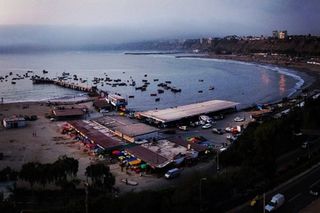
7 Things You Need To Know About Cancer

This article was originally published at The Conversation. The publication contributed the article to Live Science's Expert Voices: Op-Ed & Insights.
In Lima, Peru this week, filming our latest NCDFREE short film on inequalities and progress in cancer care - a collaboration with the UICC (global cancer body) and GlobalRT (a group that aims to increase global access to radiotherapy).

A beautiful country and a nation of wonderful, creative and vibrant people - the film aims to highlight some of the successes and challenges of global cancer care in low and middle-income nations, as well as bring attention to the need for further investment in the prevention and treatment of this group of diseases.
The film will be released in the coming months, but in the meantime I wanted to share some key facts and myths around cancer with you. Debunk some pervasive, perennial misunderstandings on cancer globally…
1. Cancer is not a disease of affluence - but wealth can change the type and outcome
When people think of cancer, they usually think of rich people in rich nations. Actually, the reality is that 70% of all cancer cases worldwide occur in low and middle-income nations, posing an enormous public health and economic burden. Now of course, this is also where a majority of the world’s population lives, but the reality is still that millions of cases of cancer occur in healthcare systems least prepared to treat them (and some would argue find them) and in communities and families least able to cope with the health and financial consequences.
A misunderstanding that not only affects local but also global prioritisation and funding for these conditions in development budgets, philanthropic responses, aid and national health expenditures.
Whatsmore, as always, it’s not so simple. Because although the rates (age standardised, per 100,000 people) of cancer are still higher in the richest nations, the types of cancer are different and patients usually present later in poorer settings - with more advanced disease. For example worldwide, the leading cause of cancer deaths in women is breast cancer, but in many poorer nations it’s cancer of the cervix.
Sign up for the Live Science daily newsletter now
Get the world’s most fascinating discoveries delivered straight to your inbox.
2. It is not about laziness
A classic myth when it comes to cancer and particularly bowel cancer, is that these are diseases of laziness. Actually, there are a myriad of causes - and many we still don’t know or understand. Things like diet, tobacco and alcohol; infections and chronic inflammation; but also environmental pollutants; and genetics.
3. Cancer is not always ‘non-communicable"
Although I talk a lot about NCDs - or non-communicable diseases - some cancers are actually caused by infections. In fact, about one-fifth of all cancers worldwide are caused this way - including cervical and liver cancers, which are paricularly common in poorer nations.
The good news, though, is that the two viruses that cause these cancers are largely preventable by vaccine - hepatitis B and human pappiloma virus.
4. Tobacco is the single biggest, preventable cause of cancer

Plain and simple, tobacco is bad.
Causing 22% of all cancer deaths worldwide, the good fight against tobacco, tobacco advertising and the big corporations that make this carcinogen continues.
5. We can prevent many cancers
Some good news, many cancers can be prevented.
30% of cancers are preventable through not using tobacco, having a healthy diet, being physically active, limiting alcohol use and being vaccinated for the most common cancer-causing infections.
These are largely the focuses of public health policies for cancer for which “prevention is better than cure” will always be a core mantra.
6. Early detection and treatment saves lives
Building on prevention, early detection and early access to treatment is of paramount, complementary importance - with treatments falling into three broad groups: surgery, chemotherapy and radiotherapy… Breast, cervical and colorectal cancers, for example, can often be cured if found and treated in the early stages of disease and are far less costly (in terms of health, economic and social costs) if identified quickly.
These challenges are magnified in a context of weaker health systems and limited funding, but it is important to remember that screening and early detection save money and lives - a driving argument for the continued work on ensuring universal prevention and care coverage.
7. Palliative care and pain relief must become universal
Although a large number of cancers are preventable or curable through appropriate policies, lifestyles, screening and treatments - many are not. For this reason, it is also crucial that every person has access to pain relief and palliative care when dying of cancer.
But in reality, many don’t.
This is one area where science has the answers - and it’s not about a lack of technology or understanding, just a lack of funding and global political will. This is a gap that must be closed.
From Lima

Signing off from Lima, I give you just a taste of the themes, challenges and ideas we will explore in the coming NCDFREE shortfilm. But for now, take a moment to reflect on the myths - and realities - of cancer globally. After all, it is only through knowledge that we will inspire collective action on cancer, a pressing global health challenge.
-
This article is based on the World Health Organization’s cancer fact sheet.

For more on global health and to connect with Sandro on Twitter, click here.
Alessandro R Demaio does not work for, consult to, own shares in or receive funding from any company or organisation that would benefit from this article, and has no relevant affiliations.
This article was originally published on The Conversation. Read the original article. Follow all of the Expert Voices issues and debates — and become part of the discussion — on Facebook, Twitter and Google +. The views expressed are those of the author and do not necessarily reflect the views of the publisher. This version of the article was originally published on Live Science.












